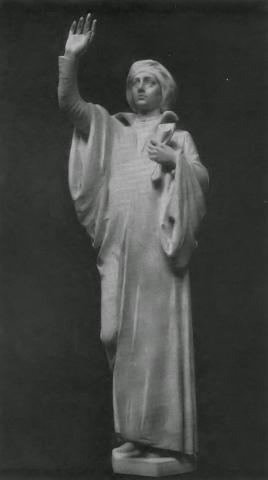Kathy Graneggen Moberg BA ’79
MCB’s elaborate Gothic portal was designed well before construction commenced in 1914 and applied as a logo to interior wood and stonework as well as on letterhead, dishes and silverware, the central niche remained empty for nearly three years. William W. Cook and his architects, York and Sawyer, began seriously discussing an appropriate fi gure to fi ll the space in the spring of 1917. Cook fi rst suggested a bust of Minerva. That idea was diplomatically discouraged in favor of a full-length fi gure, preferably medieval to match the architectural style. By the end of June, Cook made his choice: Portia, the educated female character who masquerades as a lawyer in Shakespeare’s The Merchant of Venice.
Cook chose Attilio and Furio Piccirilli to create the statue and it was formally dedicated on Commencement Day, June 1918 by MCB House Board President Margaret Yerkes Holden ’18. She would later become a Martha Cook Governor (1967-73) and she rededicated Portia during the Seventy-fi fth Anniversary Gala Weekend in October 1990.
In today’s more enlightened climate, we recognize the complicated and anti-Semitic nature of Portia’s character and that while she is noted for the beautiful Quality of Mercy speech, she herself off ers no mercy to Shylock, the Jewish moneylender. There is some evidence that Cook understood, and welcomed, the controversy. He commented upon the standard statue suggestions presented to him, saying, “You will notice they are all angels or saints, and not a lawyer or sinner among them…I wish to get away from conventional art in this particular instance.” One of the purposes of both public art and a university is to create opportunities for meaningful discussion. Our Portia does that.

